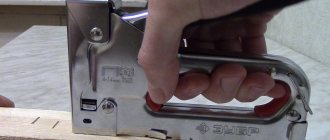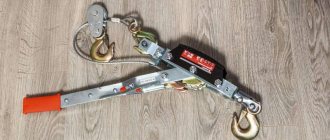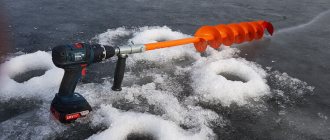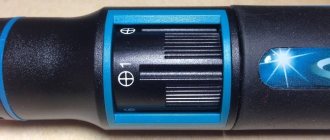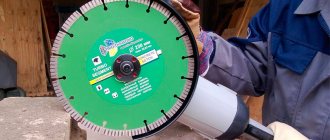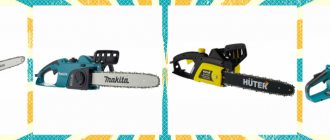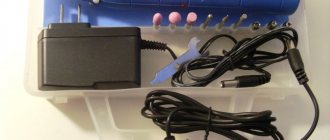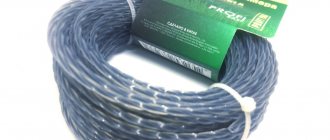Drill driver Dewalt XRP DCD996P2
- impact drill/driver
- power consumption 820 W
- powered by Li-Ion battery 5 Ah, 18 V
- maximum torque 95 Nm
- number of operating speeds: 3
- chuck diameter 1.5 - 13 mm
- spotlight, additional handle
- electronic speed control, power button locking
- weight 2.13 kg
A powerful device primarily for those involved in construction. With a torque of 95 Nm, you can screw fasteners of any length, drill holes in brick walls and wood... To ensure that the tool can be held securely in your hands, the manufacturer has provided an additional side handle, like a drill or hammer drill. The kit also includes a case, two batteries and a charger. The capacity of the battery included in the kit matches the powerful engine: 5 Ah. The model also has 11 torque stages and three speed settings - 0-450 rpm, 0-1300 rpm and 0-2000 rpm. And thanks to the quick-release chuck, changing equipment occurs in record time. The drilling diameter for wood is 55mm, for metal – 15mm, for brick – 16mm.
What kind of instrument is this?
Motor design
Common models of cordless screwdrivers have commutator electric motors in their design.
The current in them is switched through the armature winding thanks to carbon brushes.
And brushless screwdrivers work using brushless electric motors that have no brushes.
The functions that were performed by brushes in conventional screwdrivers are transferred to an electronic control unit in these models. It is capable of switching current on the stator winding, not the rotor. There are no coils on the anchor. To eliminate the possibility of contact sliding, the magnetic field in it is generated using permanent magnets. In stator windings, the required torque for current supply is created using rotor position sensors. They, in turn, work on the principle of the Hall effect.
The pulses from the rotor position sensors are received by the microprocessor along with a signal that regulates the torsion speed. After processing is completed, electrical pulses are created with precise width settings (PWM signal). The resulting combination of pulses is transmitted to inverters (current amplifiers). Their outputs are connected to the stator winding. In accordance with the information received, the inverters create current in the stator coils. The resulting pulses create an alternating magnetic field. When it interacts with the constant field of the rotor, torsion of the armature begins.
Operating principle and difference from brush:
Advantages and disadvantages of power tools without brushes
Brushless screwdrivers have both advantages and disadvantages. Among the first, the following can be distinguished:
- Greater reliability and significant durability. This is clearly visible when compared with a similar tool that has a commutator motor. Most often, it is the brushes that break, but a brushless screwdriver does not have them.
- Minimum noise level when operating the tool. This is achieved by the fact that the brushes that produce a significant amount of noise are absent from the design.
- High level of fire safety. With such a screwdriver you can safely work, without fear of a sudden fire or explosion, in very dusty rooms, or in those where there are flammable impurities in the air (for example, natural gas, vapors of hydrocarbons, alcohols, etc.). When operating a brushless motor, the occurrence of sparks, as in motors of older designs, is completely eliminated.
- High torque with a relatively compact engine. This allows you to carry out heavier work with a very mobile and easily controlled tool. And what is important - without the risk of a reverse effect - it is a common cause of injuries to wrist ligaments and damage to consumables (due to thread breakage, jamming or deformation of fasteners).
- Longer battery life when using battery models. This was achieved by a very rational engine layout and its high efficiency - about 85-90%. Accordingly, the energy reserve in the battery is spent almost entirely on doing work, and not on overcoming friction, as in the case of commutator motors.
There are only three disadvantages of brushless screwdrivers:
- High cost of the tool. This is the most serious drawback, since the tool market is oversaturated with much cheaper tools. It can pay for itself many times over long before it fails. And its repair is simply not necessary - it is enough to buy a new tool for the same low price.
- With high engine reliability, the problem of failure of other components arises - primarily the electronic part and, less often, the gearbox.
- The gearbox requires regular lubrication . To do this, you need to read the manufacturer's recommendations and strictly follow them. In general, you need to: - disassemble the gearbox, - remove any remaining old lubricant, - inspect the gears for possible damage (chips, abrasions), - apply new lubricant in the required quantity (this is usually Teflon or silicone-based lubricant).
- Difficulty, and more often simply impossibility, of self-repair. This is due to the complex microelectronic part of the instrument. If it is damaged, independent prompt repair is almost impossible. And not many craftsmen will like this - depending on expensive components and service centers.
